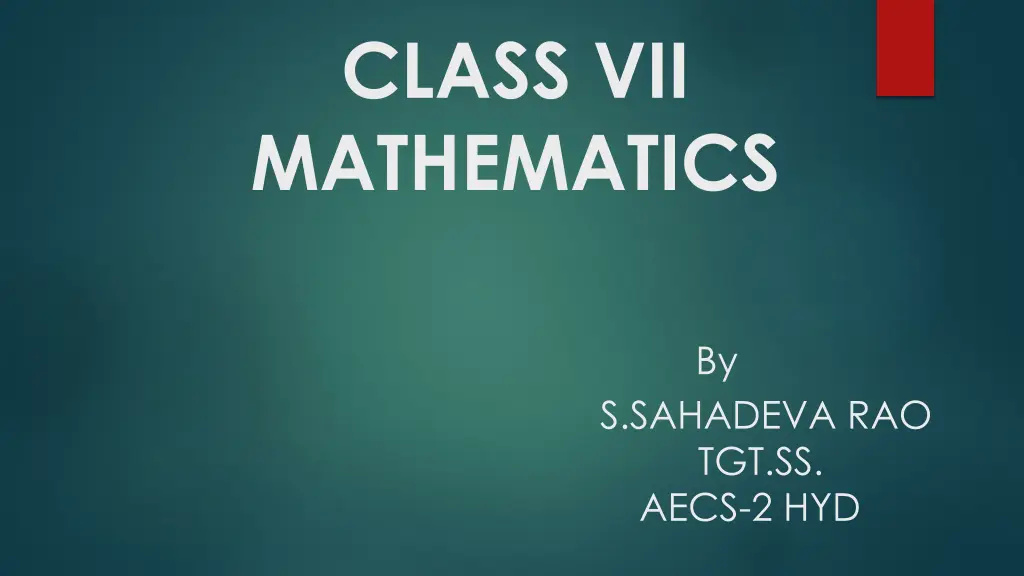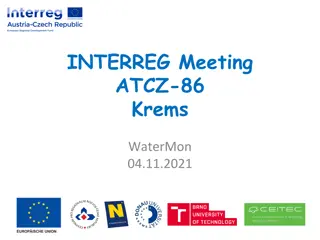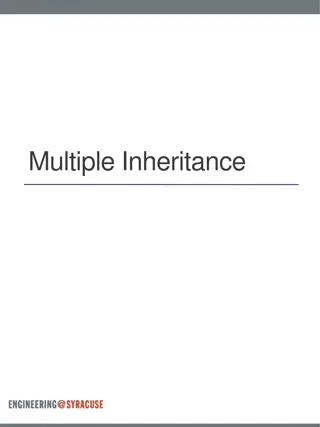
Understanding Properties of Integers in Multiplication Module
Explore the essential properties of integers in multiplication, including closure, commutative, associative properties, and the multiplicative identity. Enhance your understanding of how integers behave under multiplication with detailed examples and applications.
Download Presentation

Please find below an Image/Link to download the presentation.
The content on the website is provided AS IS for your information and personal use only. It may not be sold, licensed, or shared on other websites without obtaining consent from the author. If you encounter any issues during the download, it is possible that the publisher has removed the file from their server.
You are allowed to download the files provided on this website for personal or commercial use, subject to the condition that they are used lawfully. All files are the property of their respective owners.
The content on the website is provided AS IS for your information and personal use only. It may not be sold, licensed, or shared on other websites without obtaining consent from the author.
E N D
Presentation Transcript
CLASS VII MATHEMATICS By S.SAHADEVA RAO TGT.SS. AECS-2 HYD
CHAP-1 INTEGERS MODULE-5/8
We have discussed about the properties of integers in our previous modules. In the module 4/8 we have discussed about all the properties under addition and subtraction. In this module 5/8 we are going to discuss about the properties under Multiplication
1. Closure Property under Multiplication. For any two integers a and b , a X b is always an integer. Ex.1) 10 and -15 are integers 10 x (-15) = -150 is always an integer. Ex.2) -3 and -20 are integers (-3) x (-20) = +60 is always an integer. So Integers are Closed under Multiplication.
2. Commutative Property under Multiplication. For any two integers a and b , a X b = b X a Ex.1) -7 and 3 (-7) X 3 = -21 3 X (-7) = -21 (-7) x 3 = 3 x (-7) Ex.2) -25 and -4 (-25) X (-4) =+100 (-4) x (-25) = +100 (-25) X (-4) = (-4) X (-25) So Integers are Commutative under Multiplication.
3. Associative Property under multiplication. For any three integers a , b and c a X ( b X c) = ( a X b ) X c Ex.1) 3, 5 and -6 3 X [ 5 X (-6)] = 3 X [ -30] = -90 (3 x 5) X (-6) = 15 X (-6) = -90 3 X [ 5 X (-6)] = ( 3 X 5 ) X (-6)
Ex.2) -5 , 10 and -4 (-5) X [ 10 X (-4)] = (-5) x [-40] = +200 [(-5) x 10 ] X (-4) = [ (-50) X (-4) ] = +200 (-5) X [10 X (-4)] = [(-5) x 10 ] X (-4) So integers are Associative under Multiplication
4. Multiplicative Identity. For any integer a a X 1 = 1 X a = a , 1 is called multiplicative identity of integers Ex. (-5) X 1 = 1 X(-5 ) = -5 8 X 1 = 1 X 8 = 8 If we multiply any integer with 1 we will get the same integer again. So 1 is the multiplicative identity of integers.
Applications of these properties. Making multiplication easier. Ex.1) (-25) X 37 X 4 [(-25) X 37] X 4 = (-925) X 4 = -3700 We can do this problem by re arranging the numbers (-25) X 4 x 37 = [(-25) X 4 ] X 37 = (-100) X 37 = -3700
Ex.2) (-18) X (-10) X 9 =[ (-18) X 9] X (-10) = (-162) X (-10) = +1620 Ex.3) -1 X -5 X -4 X -6 = ( -5 X -4) X (-1) X (-6) = 20 X (-1) X (-6) = (-20) X (-6) = +120 Ex.4) -20 X -2 X -5 x -7 = [(-2) X (-5)] X (-20) X (-7) = [10 X (-20) ]X (-7) = (-200) x (-7) = +1400
Ex.5) Suppose we represent the distance above the ground level by +ve integer and below the ground level ve integer, Then answer the following. An elevator descends in a mine shaft at the rate of 5m per minute i) what will be its position after one hour. ii) If it begins to descends down from 15m above the ground , what is its position after 45minutes . Ans) i) since the elevator is going down , so the distance covered by it will be represented by ve integer. Change in the position of the elevator after 1 min = -5m Position of the elevator after 60mints = (-5) x 60 = -300m That is 300m below the ground level
But it has started from 15m above the ground level =+15m The final position of the elevator = -225 +15 = -210m That is 210m below from the ground level.
Assignment. 1. find the value. a) 3 X ( -1) b) (-1) X 225 c) 9 X (-3) X (-6) d) (-3) X (-6) X (-2) X (-1) e) -120 x (-11) x (-10) 2. Fill in the blanks. a) -3 X ____ = 27 b) 5 X _____ = -35 c) ____ X (-8) = -56 d) _____ X (-12) = 108 3. Verify i) ( 18 X 7) X (-3) = 18 X [ 7 x (-3) ] ii) (-3) x [ (-4) x (-6)] = [ (-3) x (-4) ] X(-6) 4. starting from (-1) X 5 , write various products showing some patterns to show (-1) x (-3) = 3 5. A certain freezing process requires that room temperature be lowered from 400c the rate of 50c every hour . what will be the room temperature10 hours after the process begin.






















